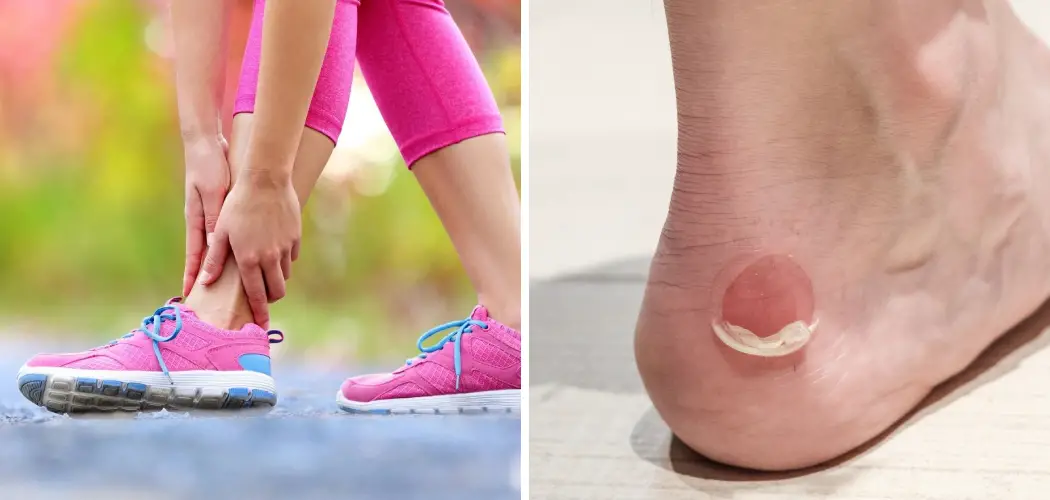Having a comfortable fit to your shoes is essential for providing the best support, comfort and mobility. Unfortunately, sometimes it can take a while before our new shoes feel truly broken in and expand enough to accommodate any rubbing against our ankles. Breaking in shoes that rub your ankle can be challenging – but learning how to do it correctly will ensure you get the most out of your new shoes.
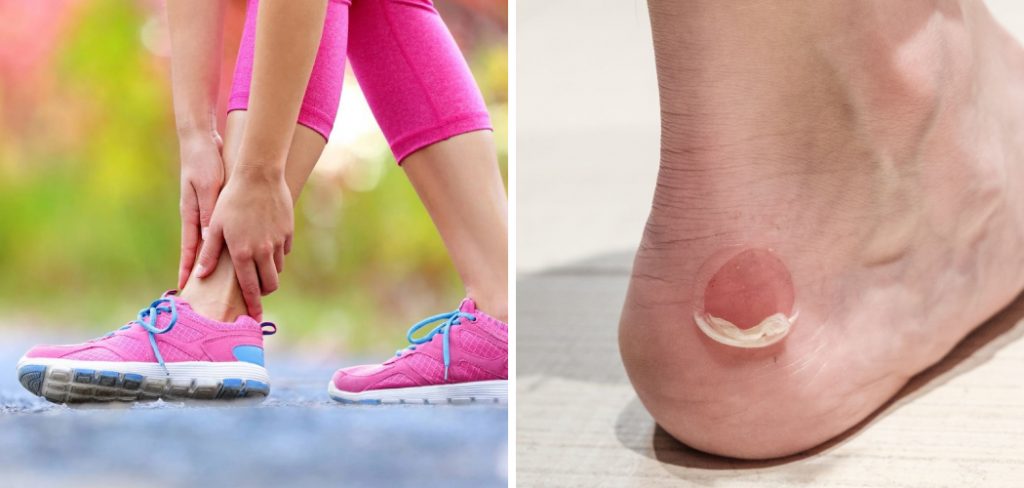
The advantage of breaking in shoes that rub your ankle is that it can make them more comfortable to wear. In this blog post, You will learn in detail how to break in shoes that rub your ankle.
Summary: Breaking in shoes that rub your ankle can be a painful and frustrating experience. However, there are several methods that you can try at home to make the process easier. These methods include wearing thick socks, using a shoe stretcher, applying heat, and using moleskin or adhesive bandages.
Materials You Will Need
- Thick socks
- Shoe stretcher
- Newspaper
- A towel
- Water
- Baby powder or cornstarch
- Rubbing alcohol
- Leather conditioner or cream
- Hair dryer or heat gun
- Ice bag for pain relief
Step-by-Step Processes for How to Break in Shoes That Rub Your Ankle
Step 1: Inspect the Shoe
Before attempting to break in shoes that rub your ankle, it’s important to ensure there is no structural issue with the shoe. Ensure that the top of the shoe isn’t too tight or loose, as this could be causing friction against your skin. To help protect your ankle from any further irritation, you can insert padding into the shoe. This can help create a cushion between your ankle and the shoe, making them more comfortable to wear.
Step 2: Wear Thick Socks or Tights
Another way to break in shoes that rub your ankle is to wear thick socks or tights. This will provide an extra layer of protection between your skin and the shoe, reducing any chances of friction or irritation. Additionally, wearing thick socks can help soften the material of the shoe and make them more flexible.
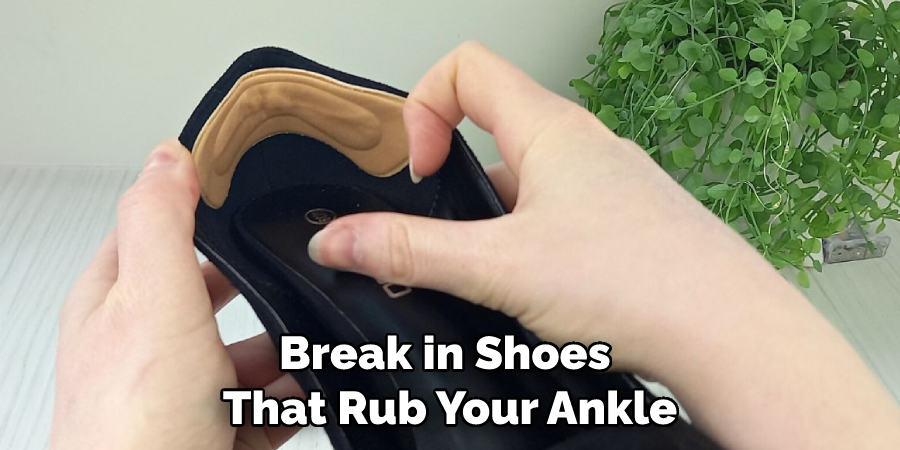
Step 3: Use a Leather Conditioner
Leather conditioners can be used to soften the material of leather shoes, making them more comfortable to wear. When applying the conditioner, ensure it is evenly distributed around the shoe, and pay special attention to any areas where your ankle has been rubbing against it. Allow the conditioner to soak in for a few minutes before wiping off any excess.
Step 4: Wear The Shoes Around The House
Once you have completed all the above steps, start wearing the shoes around your house for a few hours. This will help slowly break them in and make them more comfortable to wear. You may need to do this a few times before they are fully broken in, but it is better than having them rub your ankle all day.
With the right steps, you can break in shoes that rub your ankle and make them more comfortable to wear. Before attempting any of these methods, it’s important to inspect the shoe for any structural issues that could be causing the rubbing.
Tips for How to Break in Shoes That Rub Your Ankle
- Always wear socks with your shoes to prevent friction from burning. This will also help protect against blisters and other skin irritations.
- Make sure the shoe fits properly before attempting to break in your shoes. If it’s too small, rubbing on your ankle can be even more uncomfortable.
- Try soaking your shoes in a bucket of warm water before attempting to break them in. This will soften the material and make it more pliable.
- Use a shoe stretcher to increase the size of the ankle area further if needed. Make sure to use one that is made of leather or other materials used on the shoe you’re breaking in.
- Try using a shoe horn to help put your foot in the shoe more easily and comfortably. It can also help reduce any rubbing on your ankle area.
- Stuff the toes of your shoes with newspaper, cotton balls or other soft material to create extra cushioning around the ankles, thus reducing rubbing and abrasion.
- Apply a moisturizer or petroleum jelly to your ankles before putting the shoes on to help reduce friction.
- Wear your shoes in short increments until they break in completely, allowing for ample rest and recovery for your feet in between wearings. This will help prevent chafing, blisters, and other skin irritations.
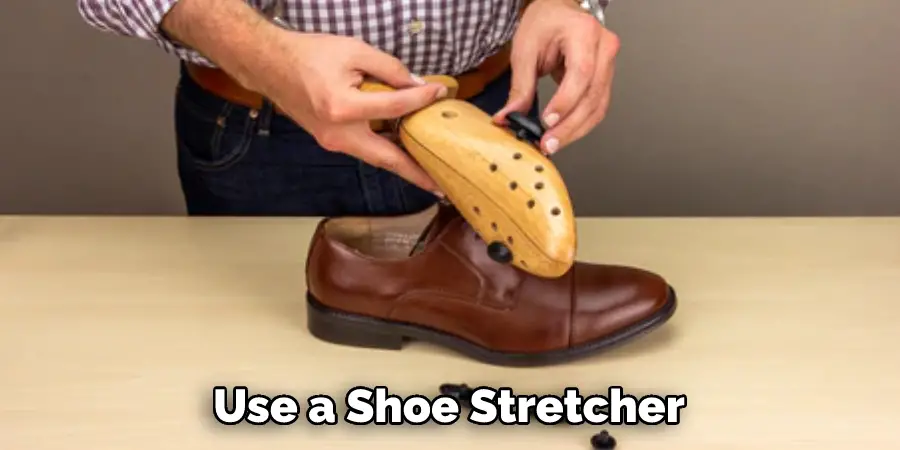
Following these tips for breaking in shoes that rub your ankle can greatly reduce the amount of discomfort and potential damage to your feet.
How Can You Prevent the Shoe From Rubbing Against Your Ankle?
- Before buying a new pair of shoes, make sure that you try them on and walk around with them to check the fit of the ankle area.
- Ensure that your shoes are not too tight or too loose, especially around your ankles. Shoes that are too large can easily cause rubbing and blisters when worn.
- If the shoe rubs against your ankle, you can use fabric softener to help make them softer and conform better to the shape of your foot. Use a cotton cloth to apply the fabric softener directly onto the affected area and allow it to dry.
- Another method is to wear thick socks while you break into your new shoes. This will provide an extra layer of cushioning and will help to reduce the amount of rubbing.
- Most importantly, wear your shoes for short periods at first to give them time to mold around your foot shape. As you wear them more, they will start to conform to your feet and no longer rub against your ankle.
Following these steps can prevent your shoes from rubbing against your ankle, and breaking in new shoes should be a much easier process.
What Techniques Are Available for Breaking in a Pair of Shoes Quickly?
When you have a pair of shoes that rub your ankle, there are several techniques you can use to break them in quickly. One method is to fill two plastic bags with water and place one on either side of the shoe. Put the shoes in the freezer overnight, and then remove them in the morning. As the water freezes, it will stretch the material of your shoes and make them more comfortable. Another method is to wear your shoes around the house for short periods of time throughout the day. Wear a pair of socks each time to help build up a cushion of comfort between your feet and the shoe’s interior. This will help ease any tightness around your ankles and make the shoe more comfortable.
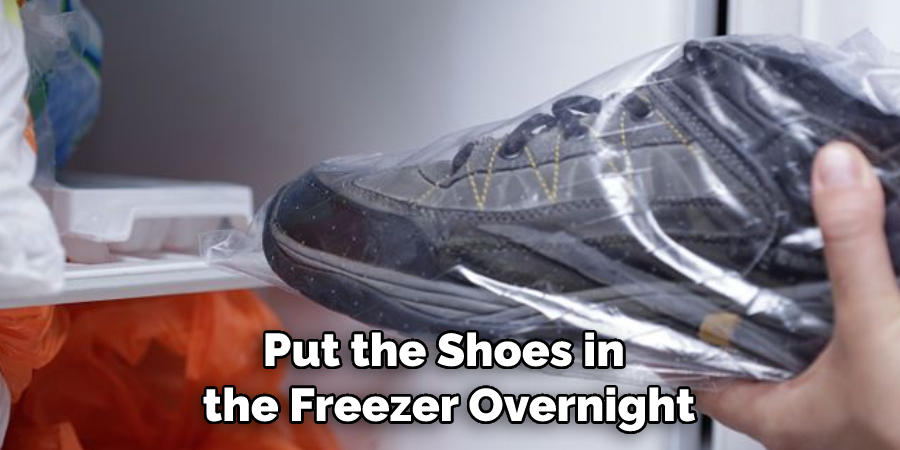
You can also try using a leather softener to break in your shoes. This is especially effective for leather or suede material. The product will help soften and stretch the material, providing more cushioning for your feet. Before applying it, however, you should always read the instructions on the bottle so that you don’t ruin your shoes. Finally, you can try a shoe stretcher to break in your shoes. A shoe stretcher is a tool that helps stretch the material of your shoe and make it more comfortable.
How Should You Care for Your Shoes After They’re Broken in?
- Apply a leather conditioner to your shoes once they’ve been broken in. This will help protect the material and keep it looking great.
- Use an old toothbrush or cotton swab to apply a small amount of the conditioner in circular motions, making sure to cover every part of the shoe.
- Allow the shoes to dry completely before wearing them again.
- When not in use, store your shoes in a cool and dry space so that they don’t get wet or suffer from extreme temperatures, which could damage the leather.
- Stuff the inside of each shoe with newspaper or tissue paper when not worn. This will help them keep their shape.
Finally, if you experience any problems with your shoes after they’ve been broken into, take them to a professional cobbler for repair or replacement. By properly caring for your shoes, you can ensure that they stay comfortable and look great long after they’ve been broken in.
By following these simple steps, you will get the most out of your footwear and enjoy many years of comfort.
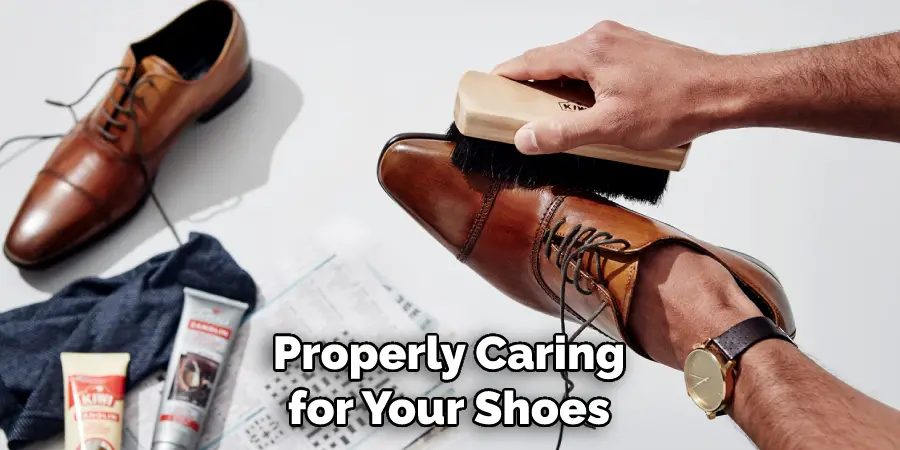
Conclusion
One of the disadvantages of breaking in shoes that rub your ankle is that it takes time and effort to do so. Breaking in a new pair of shoes can be lengthy, especially if they are stiff or tight-fitting. Another disadvantage is that there is no guarantee that the shoe will ever fit comfortably; some people may find that even after breaking them in, they will still cause some discomfort and pain.
In conclusion, breaking in shoes that rub your ankle can be difficult, but with the right techniques and tips, you can make it easier. Taking the time to stretch them out and adjust the lacing properly can help reduce rubbing, while adding cushioning inserts or padding can provide extra comfort. Additionally, moisture-wicking socks can keep your feet dry and prevent friction. With these tips, you can make sure that your shoes fit comfortably and that you have a successful experience breaking them in. I hope this article has been beneficial for learning how to break in shoes that rub your ankle. Make Sure the precautionary measures are followed chronologically.

